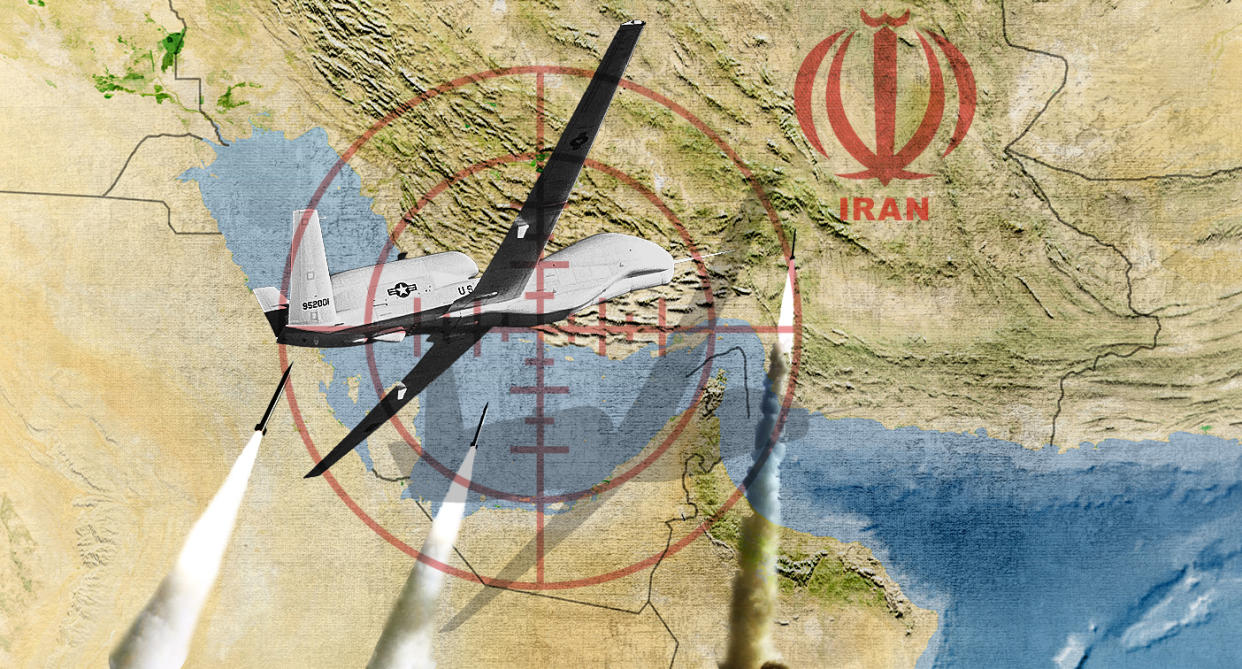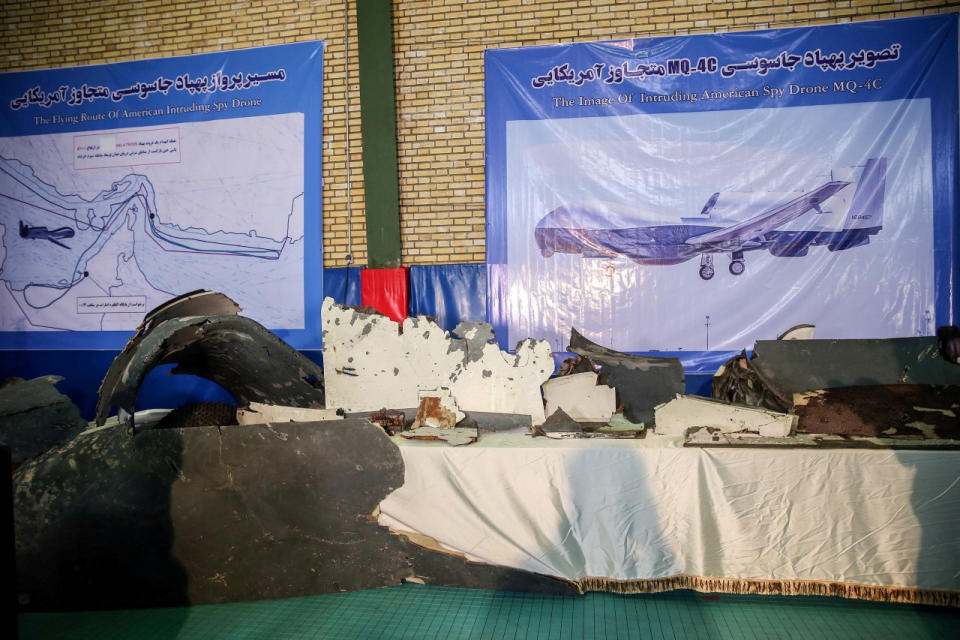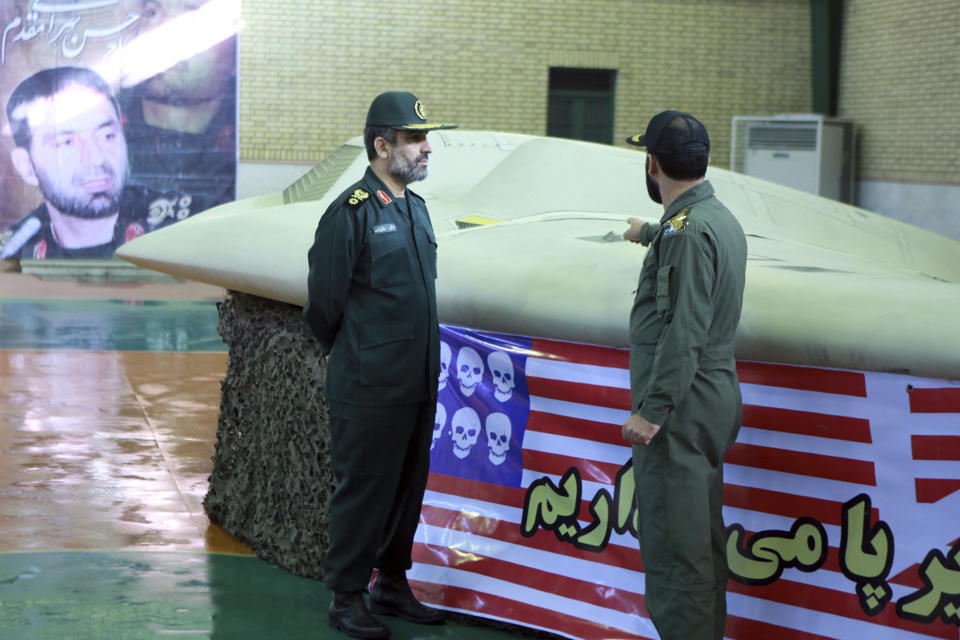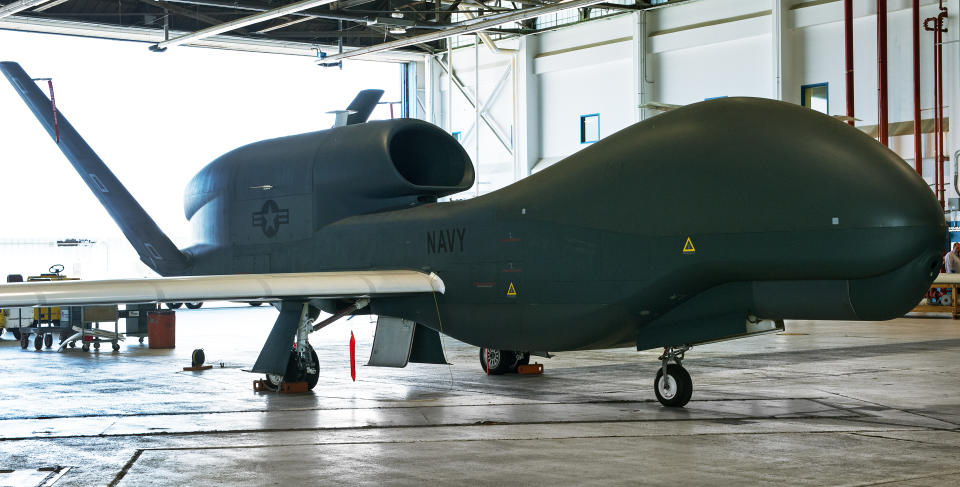Drone shootdown highlights history of U.S. incursions into Iran's airspace

WASHINGTON ?— The U.S. military drone Iran shot down near the Persian Gulf on June 20 likely didn’t stray into Iranian airspace, as the Iranians claimed it had, according to several former senior officials. But had it done so, it would not have been the first U.S. drone to fly into Iran, according to two of those officials.
“Have drones gone into Iranian airspace? Absolutely,” said a retired senior military official. “They have been deliberate [incursions], and they have been accidental.”
Incursions have occurred during the past four years, but “not all that often,” this official said, adding that the encroachments into Iranian airspace had not increased under the Trump administration. “This stuff goes back a long time,” he said.
A former U.S. Central Command official said he was aware of accidental drone incursions into Iranian airspace between 2013 and 2016. “Those one or two instances were by error,” the official said. “Those were innocent circumstances.”
The Iranians did not respond aggressively on those occasions, the former Central Command official said, noting that “communication protocols” existed between U.S. and Iranian forces to mitigate the risks inherent in such episodes. Nonetheless, Central Command took the episodes seriously, according to the former official. “That would warrant at least an emailed notification to the chairman [of the Joint Chiefs of Staff] and through the chairman probably to the [defense secretary],” he said.
Neither the retired senior military official nor the former Central Command official was able to be more specific about when the incursions happened. Without that information, Central Command spokesman Navy Capt. Bill Urban said he unwilling to provide any detailed response to a query from Yahoo News. “If your intention is to report on nonspecific allegations of incursions by unnamed sources, then I am not going to lend additional credibility to your story through further comment,” Urban said.
In addition to the occasional mistaken flight into Iranian airspace, there are strong indications that the United States also deliberately flies stealth drones over Iran to collect intelligence. The clearest evidence of this is a December 2011 incident in which Iran brought down and then displayed a RQ-170 drone that had been flying a secret mission for the CIA through its airspace.

The missions over the Persian Gulf of the sort flown by the drone Iran shot down on June 20 are the only U.S. drone missions involving Iran that are not classified, according to a former senior Pentagon official. “The only thing I could really talk about without violating classification is the tracks that were being run up and down the coast of Iran,” the former senior Pentagon official said. “Everything else is more or less classified and I can’t really talk about it.”
The CIA drone flights are “a very close-held program,” said a former senior Central Command official. If the CIA was flying drone missions into Iran from airspace controlled by the United States, such as that over Afghanistan, it would give the U.S. military’s Combined Air Operations Center, or CAOC (pronounced “kay-okk”), the minimum information required to ensure that no U.S. military flights interfered with them or crashed into them, according to the former senior Central Command official. That could be accomplished by giving the CIA a window in time and space through which U.S. military would not fly aircraft. “The other agencies might have discrete windows where they’re allowed to fly and then they would have zones where they would operate where U.S. military aircraft would not operate,” he said. “They want to make sure they have complete autonomy to move the platform wherever they want to move it and keep [the military] out.”

Asked whether the Defense Department had any of its own stealth drones that it could fly into denied territory, the former senior Central Command official demurred. “I can’t really talk about that,” he said. “I would say that there are segments within the [Defense Department] community that have higher capabilities that aren’t traditionally understood by everybody. So there are other capabilities out there that [the military] could reach into.”
The former senior Central Command official was also reluctant to discuss whether the military could fly stealth drones into a denied area under its own espionage authorities. “You’re probably moving into areas that I’m less comfortable describing,” he said. “The scenarios you describe, has that happened? Oh yeah, I’m sure it has.”
However, he added, those missions might not be under military command and control while in denied airspace, nor would military personnel necessarily be operating the aircraft at each end of its flight. “Those aren’t military guys that are doing that,” he said. “That’s contractors or other people that are at the launch and recovery sites.”
Iran claimed it brought down the RQ-170 in December 2011 by using cyber techniques to take control of it. Retired Lt. Gen. David Deptula, a former Air Force deputy chief of staff for intelligence, surveillance and reconnaissance, called that claim “pure speculation.” The Iranians have made no similar claims regarding the June 20 shootdown, but they have repeatedly stated that the Navy drone — known officially as a Broad Area Maritime Surveillance Demonstrator, or BAMS-D — was in Iranian airspace when they shot it down just east of the Strait of Hormuz.

U.S. officials have flatly denied this, and former senior officials familiar with missions over the Persian Gulf said it was highly unlikely. First, they said, the BAMS-D, a variant of the RQ-4A Global Hawk modified for ocean surveillance, flies so high that operating a few miles closer to Iran would not confer much of an advantage, particularly as it was probably monitoring the Gulf and the Iranian coastline, not locations deep inside Iran.
“The sensors onboard a BAMS-D flying above 50,000 feet can look over a hundred miles on either side,” said Deptula, the retired Air Force general. “The Iranians had just attacked and blown up a Japanese-owned tanker and a Norwegian-owned tanker the week before, so very likely the BAMS-D was collecting information about maritime traffic in the area, and there’s no reason to fly into Iran to do that.”
Unlike the RQ-170, the BAMS-D is not a stealth aircraft designed to penetrate denied airspace. “It is a big, slow collector,” said the former senior Central Command official. “It buys you nothing to creep in two miles.”
Second, unlike better-known drones like the MQ-1 Predator and the MQ-9 Reaper, the BAMS-D is not piloted remotely, but is completely autonomous and flies a preprogrammed path guided by a Global Positioning System, making the chance that human error caused it to cross into Iranian airspace very remote, according to the former officials. The possibility of a navigational malfunction was also low, they said. “I guess you could conceive of some kind of a breakdown in the control system, but it would be unusual,” said a former senior Pentagon official. “That stuff is very, very reliable.”
The BAMS-D has been flying surveillance missions along the Persian Gulf for at least eight years, according to this official, who said that at one time the drone was flying about nine missions per month under the operational control of Central Command. “It started out as a six-month demonstration deployment and everybody just liked it, and it’s been going on for like eight years now, maybe more,” the official said.

The U.S. military does “extremely detailed planning” for flights through the Strait of Hormuz, the narrow body of water that separates the Persian Gulf from the Gulf of Oman and the Arabian Sea, according to a former Central Command official.
“There’s a very specific, detailed route right along the international demarcation line that any and all of those types of activities are conducted along, and not outside those boundaries,” said the former Central Command official. “It’s basically a buffer area to help mitigate even the risk of possible, unintentional, accidental breach of the sovereign national airspace.”
_____
Read more from Yahoo News:
GOP whip Scalise cites Trump accuser’s ‘bizarre’ CNN interview in doubting her account
Pentagon secretly struck back against Iranian cyberspies targeting U.S. ships
'Great Replacement' ideology is spreading hate in U.S. and across the globe
How Europe's smallest nations are battling Russia's cyberattacks
PHOTOS: Independence Day fireworks light up the nation's skies


